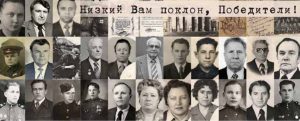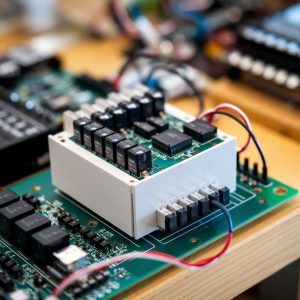Items of № 12-1, 2024
Statistical assessment of antenna radiation levels for electromagnetic compatibility studies
O.I. Yastrebtsova, The M.I. Krivosheev Radio Research & Development Institute (NIIR), head of laboratory, Ph.D.; yastrebcovaoi@niir.ru
Abstract. The article considers the issue of statistical assessment of antenna radiation patterns for electromagnetic compatibility studies. An analysis of the statistical distribution of the deviation of antenna radiation from the “peak” envelope is presented, which made it possible to formulate a model for predicting radiation levels for any percentage of time. Current electromagnetic compatibility studies use “peak” and “average” envelopes corresponding to 0% and approximately 50-60% of the time during which the radiation level can be exceeded. The developed model allows to extend the concept of side lobe envelopes to the case of any percentage of time. It is applicable to directional antennas with rectangular and circular apertures with different amplitude distributions, i.e., for example, to reflector antennas and antenna arrays. The model can be used in electromagnetic compatibility studies conducted using the Monte Carlo method or to calculate single interference using protection criteria that can be exceeded in a certain percentage of time.
Keywords: electromagnetic compatibility, antennas, antenna arrays, reflector antennas, Monte-Carlo method.
A neural network approach to controlling the shape of the radiation source radiation pattern
Ahmad Ali, Moscow Technical University of Communication and Informatics (MTUCI), engineer, postgraduate; dk12to34ra56@gmail.com
Hasann Diaa, MTUCI, engineer, postgraduate; diahassan159@gmail.com
A.K. Svetashov, The M.I. Krivosheev Radio Research & Development Institute (NIIR), engineer, MTUCI, postgraduate; svetashovak@niir.ru
A.V. Nikolaev, MTUCI, head of department, associate professor, Dr.Sci.(Tech.); mosipg@yandex.ru
A.G. Prokhorkin, Military Educational and Scientific Center of the Ground Forces, head of department, associate professor, Dr.Sci.(Tech.); prohorkin@yandex.ru
Abstract. The procedure for calculating the amplitude and phase of signals in the antenna array elements for synthesizing the required shape of the radiation source radiation pattern and optimizing the conditions for receiving/ transmitting radio signals using neurocomputer procedures is considered. A neural network approach to the continuous control of the shape of the radiation source radiation pattern is proposed. The described procedure, as the authors believe, will increase the likelihood of receiving useful radio signals in conditions of interference caused by multipath and increase the efficiency of digital systems and communication networks in general.
Keywords: radiation pattern of antenna systems, artificial neural networks, multipath radio communication, radio waves, radio equipment, neurocomputer procedures.
Telephone numbering information system as an anti-fraud tool
V.О. Risman, The M.I. Krivosheev Radio Research & Development Institute (NIIR), deputy general director; rismanvo@niir.ru
M.Yu. Kutepov, NIIR, director of SIT; kutepovmy@niir.ru
I.A. Bukharev, NIIR, head of research center; buharevia@niir.ru
E.B. Kuptsova, NIIR, deputy head of research center; kupcovaeb@niir.ru
Abstract. The article describes measures to improve the security of the information contained in the database of transferred subscriber numbers (DBTN), since the information from the DBTN, if it falls into the hands of fraudsters, may be used to commit illegal acts. One of such activities is to ensure the functioning of the telephone numbering information system. The functionality of the system is presented, which provides information about the ownership of a telephone number to a telecom operator in real time, taking into account its possible transfer to another telecom operator.
Keywords: MNP service, database of transferred numbers, telephone numbering information system, fraud, anti-fraud.
Application of orthogonal transform in MMSE algorithm in the form of Kalman filter when implemented on a fixed-point processor
S.B.K. Ben Rejeb, Moscow Technical University of Communications and Informatics (MTUCI), postgraduate; sbenrezheb@yandex.ru
V.B. Kreyndelin, MTUCI, head of the department of electrical circuit theory, professor, Dr.Sci.(Tech.); vitkrend@gmail.com
Abstract. This article examines the use of Multiple Input Multiple Output (MIMO) systems as one of the most effective approaches to enhance network capacity and robustness. Special attention is focused on the Minimum Mean Square Error (MMSE) algorithm, which has proven to be a reliable tool for signal processing in such systems. However, its implementation on fixed-point processors presents certain challenges, reducing computation accuracy and the noise robustness of the system. To improve the accuracy and noise immunity of the demodulation algorithm, the article proposes the use of orthogonal transformation at the data preprocessing stage, which reduces sensitivity to rounding errors. A method has been developed that uses the Kalman filter to reduce the impact of rounding errors associated with the finite precision of numerical representation.
Keywords: MIMO, MMSE, QAM, noise robustness, fixed point, Kalman filter
The bandwidth of an energy-efficient communication channel with noise-resistant encoding with BCH codes
D.S. Kukunin, The Bonch-Bruevich Saint-Petersburg State University of Telecommunications (SPbSUT), department of communication networks and data transmission, associate professor, Ph.D.; kukunin.ds@sut.ru
V.I. Bobrovsky, SPbSUT, department of software engineering and computer engineering, professor, Dr.Sci.(Tech.); bobrovskii.vi@sut.ru
R.V. Kirichek, SPbSUT, rector, professor, Dr.Sci.(Tech.); kirichek@sut.ru
Abstract. The paper investigates the bandwidth of discrete channels with constant parameters, additive white Gaussian noise, and optimal coherent reception when using signal structures with binary amplitude-shift keying (ASK), frequency-shift keying (FSK), and phase-shift keying (PSK). Special attention is paid to the issues of the joint application of these types of modulation and noise-resistant BCH codes.
Keywords: modulation, amplitude-shift keying, ASK, frequency-shift keying, FSK, phase-shift keying, PSK, noise-resistance coding, BCH codes.
Prospects for the development of GEO and Non-GEO satellite communication systems
O.V. Mentus, The M.I. Krivosheev Radio Research & Development Institute (NIIR), director of the scientific and technical center; mentusov@niir.ru
E.A. Dyakova, NIIR, head of the laboratory; dyakovaea@niir.ru
Abstract. The article presents the results of the analysis of world trends in the development of civil satellite communication and broadcasting systems in geostationary earth orbit (GEO) and Non-GEO. Possible ways out of the current crisis are shown by searching for new strategies related to the development of new markets and the search for new technical capabilities. The priority areas for the development of satellite communications operators are considered and a number of fundamental provisions for HTS systems in low Earth orbits are formulated.
Keywords: satellite communications, GEO, Non-GEO, spacecraft, broadband access, flexibility, payload, throughput, satellite orbit, orbital grouping.
A model for assessing the security of elements of telecommunication equipment
I.B. Saenko, FSBI Branch NIIR–LONIIR, senior researcher, S.M. Budyonny’s Military Academy of Communications (MAC), professor, Dr.Sci.(Tech.); ibsaen@mail.ru
A.V. Vasin, Admiral Makarov State University of Maritime and Inland Shipping (AM SUMIS), associate professor, Dr.Sci.(Tech.); VasinAV@gumrf.ru
V.E. Marley, AM SUMIS, professor, Dr.Sci.(Tech.); vmarley@mail.ru
S.L. Lebedev, S.M. Budyonny’s MAC, applicant; bitterman1@yandex.ru
A.V. Ermakov, M.K. Ammosov’s North-Eastern Federal University, rector’s adviser, FSBI Branch NIIR – LONIIR, head of department, associate professor, Ph.D.; ermakov-it@yandex.ru
Abstract. A mathematical model is proposed that allows us to quickly calculate the current level of security of packet switching equipment for communication networks, including when changing any of its indicators (settings). In addition, the model parameters allow you to make a forecast on the state of equipment security in the near future.
Keywords: telecommunication equipment, information security, security, model, computer attacks.
Implementation of an access control system using biometric face authentication
D.O. Myrov, RUT MIIT, student; Myrov.dima2016@yandex.ru
A.V. Gotin, RUT MIIT, student; art2003got@gmail.com
Abstract. The article is devoted to the development of a “smart” face recognition locking system and provides an overview of the computer vision methods underlying its operation. It examines modern approaches to access control, principles of biometric authentication, and features of facial recognition technology. The study used liveness verification methods such as blink detection, image depth analysis, and others to protect against spoofing.
Keywords: smart lock, face recognition, biometric authentication, liveness verification, ESP 32-CAM, computer vision, access control, security, IoT, biometrics, convolutional neural networks, CNN.
Probabilistic and statistical assessment of the effect of mechanical vibrations on the parameters of a optical fiber
E.Z. Savin, Far Eastern State Transport University, professor, Ph.D.; ev.savin.49@mail.ru
Abstract.The paper considers a probabilistic approach to assess the impact of mechanical vibrations on the parameters of fiber-optic cable suspended on the supports of the railroad contact network. It is shown that ignoring this method can lead to a sharp deterioration of the quality of transmitted information in high-speed digital fiber-optic transmission systems.
Keywords: optical fiber, gyrotropy factor, mathematical expectation, dispersion, pulse broadening.
Characteristics calculation for antennas with cylindrical and conical aperture surface
A.M. Somov, The M.I. Krivosheev Radio Research & Development Institute (NIIR), expert, professor, Dr.Sci.(Tech.); somov_am@list.ru
R.V. Kabetov, Moscow Technical University of Communications and Informatics, associate professor, Ph.D.; kabetov_rv@mail.ru
Abstract. General expressions are obtained for calculating the characteristics of antennas with cylindrical and conical aperture surfaces. Some special cases are compared with known results.
Keywords: aperture theory, cylindrical aperture, conical aperture, outer problem, reflector antenna.









